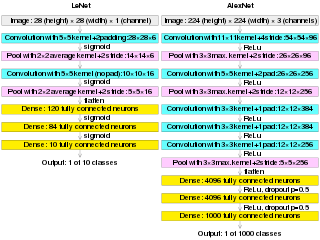| Name | Plot | Function,  | Derivative of  , ,  | Range | Order of continuity |
|---|
| Identity |  |  |  |  |  |
| Binary step |  |  |  |  |  |
| Logistic, sigmoid, or soft step |  |  |  |  |  |
| Hyperbolic tangent (tanh) |  |  |  |  |  |
| Soboleva modified hyperbolic tangent (smht) |  |  | |  |  |
| Rectified linear unit (ReLU) [10] |  |  |  |  |  |
| Gaussian Error Linear Unit (GELU) [2] |  |  |  |  |  |
| Softplus [11] |  |  |  |  |  |
| Exponential linear unit (ELU) [12] |  |  - with parameter

|  |  |  |
| Scaled exponential linear unit (SELU) [13] |  |  - with parameters
 and and 
|  |  |  |
| Leaky rectified linear unit (Leaky ReLU) [14] |  |  |  |  |  |
| Parametric rectified linear unit (PReLU) [15] |  |  - with parameter

|  |  |  |
| Sigmoid linear unit (SiLU, [2] Sigmoid shrinkage, [16] SiL, [17] or Swish-1 [18] ) |  |  |  |  |  |
| Gaussian |  |  |  |  |  |



























































































